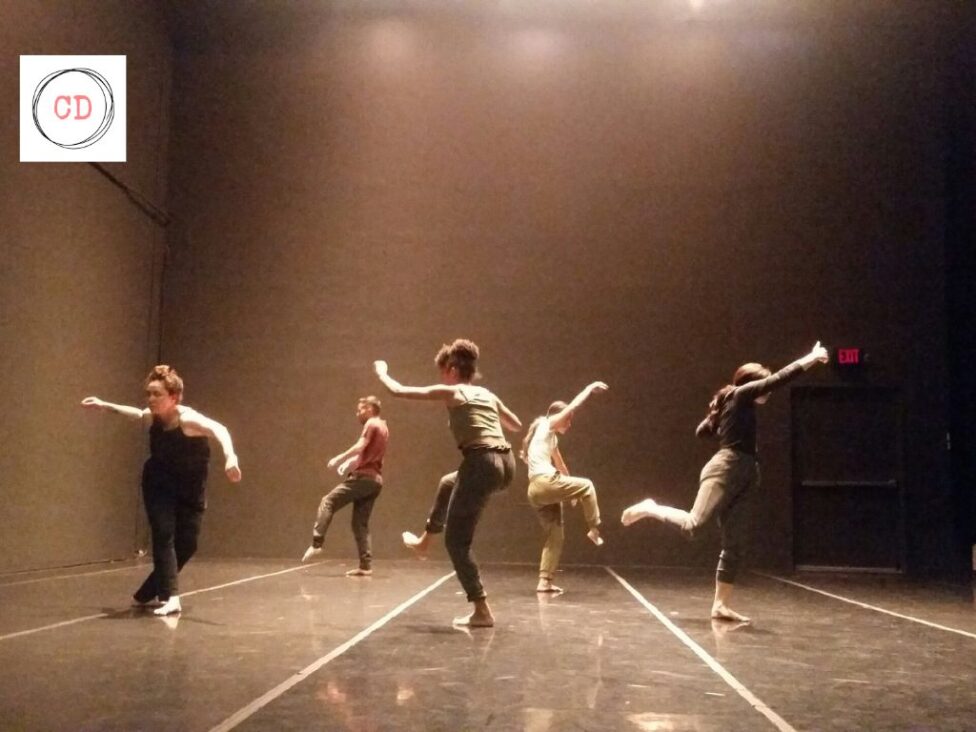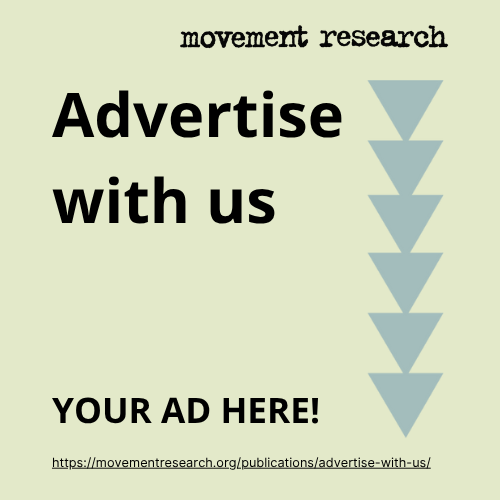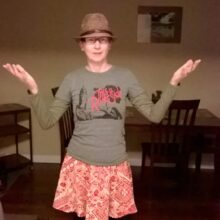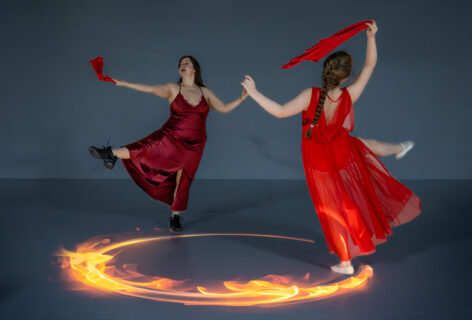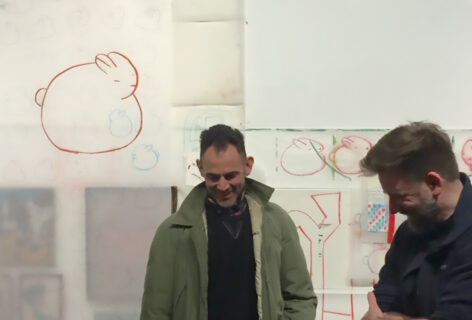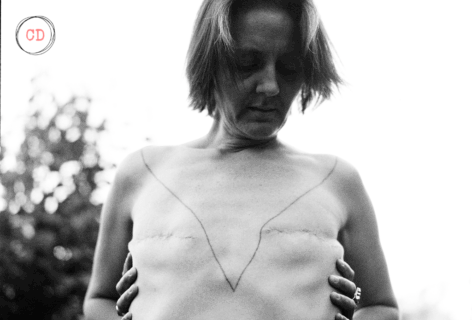A note from Jmy James Kidd, guest-editor
I wanted to work on this Cancer Dancer project for reasons similar to why I have created the organizations / communities / spaces throughout my life like AUNTS is Dance and Pieter Performance Space – something I needed that wasn’t available yet, or available to me, or available in a way I found inviting. I would have loved to have found the support / inspiration / camaraderie of a range of written experiences, images and videos by dancers who had or have cancer in their lives when I got my diagnosis and went through many, many treatments. Arriving on the “other side of cancer” I found myself cleaved into me as cancer patient that couldn’t really believe what I just went through and a new me that was completely lost and empty – who am I, who am I now? Reaching out to other dancer people that I know and that I don’t know, responding to my own writing prompts, peering into and sharing my own experience with myself and others, connecting to these incredible humans that are part of Cancer Dancer is part of my personal integration project that I hope offers insight and support to dancers as well as caregivers as well as anyone, should they find themselves with a god damn cancer diagnosis. I was interested in Dancers writing as Dancer People; from the rhythms, vocabulary, way of their own dance trainings, practices and lives. So much love to Kyoko Takenaka, Roya Carreras, Lindsey Red-tail, Sue Roginski whose writings had me in tears, laughter and deep respect. A resource guide, compiled by us all, can be found online at Pieter Performance Space.
Cancer Dancer Resource Guide on Pieter website: https://www.pieterpasd.com/cancer-dancer-resources
City of Hope – The Doctor Visit
Every 4 months I go to City of Hope (CofH) for my oncology visit. Dr. Polineni goes over blood work with a comprehensive metabolic panel, CBC and differential with absolute counts and BCR-ABL1 (cancer marker). I live with Chronic Myeloid Leukemia (CML). What I understand is that leukemic cells are firing in my body every day. They are defective white blood cells essentially.
The medication I take daily is called ICLUSIC, which is a TKI (Tyrosine kinase inhibitors). This means it targets the leukemic cells. It’s also a pill form of chemo that comes with many side effects. For me I deal with dry eyes, blepharitis, and other eye issues. Oh yeah blindness is a major side effect. I now consider myself disabled. Driving on the highway is difficult especially if I am facing the sun. At one of my jobs I have asked for accommodations because of my compromised vision.
I am now on blood pressure (BP) meds because this medication is hard on my heart. My blood pressure went up after I was on the TKI medication. I go in for regular EKG (electrocardiograms)’s and echocardiograms. Another side effect I deal with is dry skin, like really dry skin. And I lost my hair.
At City of Hope I’m still wearing a mask. I just feel better that way. I always try to wear a mask in places with large crowds.
I sign in and pay the copay. I get called back in about 5 min. Here I’m called Sue and prefer this to Susan at all appointments. At one point when I filled out a form at CofH Upland, I was asked my preferred name, and I put down Sue. I highly recommend this. This has changed how I feel at the office somehow. It hasn’t taken away the fear in waiting for the doctor, but has somehow made me feel more comfortable.
I go and get weighed. Then I am brought into a room for a series of questions. Are you in pain? Have you had any falls? Any thoughts of suicide? The nurse listens to me chat about my stressful morning. I’m nervous because I don’t know yet what the BCR is (although I have full access to my blood work on the portal). I had checked in the morning but didn’t see the BCR.
After my blood pressure and temperature are checked, I am left in the room alone. I prefer the door open, but she closes it to about two inches so I have privacy and so do other patients.
I’m waiting (today a little longer) for about 15 minutes. Before the doctor enters, I breathe in and out and roll my shoulders. I reach up with one arm and stretch to the side and repeat with the other arm. I fold my hands behind my head and look up toward the ceiling with my face.
Dr. Polineni enters, says hi, smiles, and sits in front of me. “Your blood work looks great.” “Undetectable.” He asks “Still on 30 mg of ICLUSIG?” as if he is double-checking with me. He assures me, “It’s working.” When I became undetectable in 2021, I had asked for the medication to be lowered (thinking my eyes would stop suffering). My previous oncologist Dr. Ziari had said we could try it. He wasn’t concerned. He said if the number pops up we will go back to the 30 mg.
Dr. Polineni and I chat a bit about my breast care and my next mammogram. He asks, “Have you scheduled this?” I explain how the doctors often disagree on when I should get the mammogram. But I tell him that I’ll schedule it for one month prior to seeing Dr. Wagman (surgical oncologist).
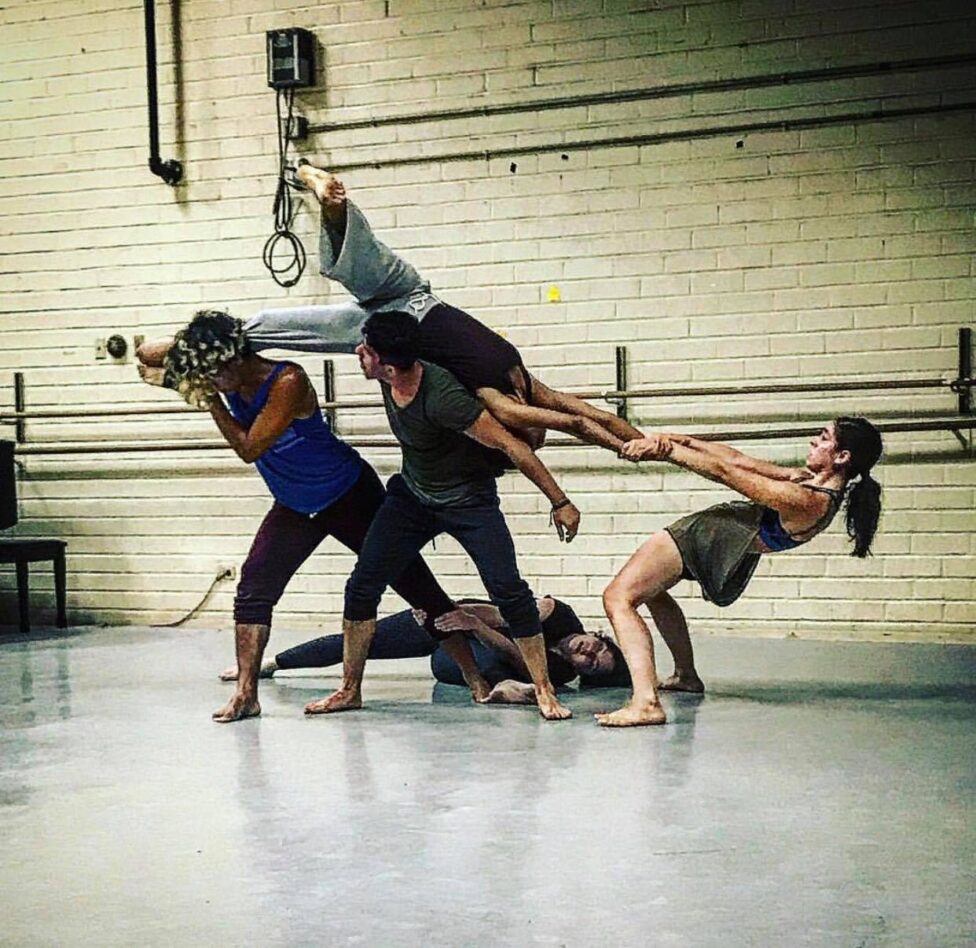
11 years ago
I was 49 when I was diagnosed with CML. I had just had a birthday. While in the hospital I was getting ready for something called Art Make through the Riverside Art Museum. I told the doctor that I HAD to leave. She told me if I left now, I would have to enter through the ER and go through that process again.
So I called Tracy Tom-Hoon who was a part of my improvisation practice at the time and one of four dancers working with us on the Art Make happening. Tracy came to see me at the hospital, and I asked her to take the lead. Tracy did more. She created mini zines to hand out at Art Make with the instructions on them. Art Make was a community outreach project and we were the only dancers. Our task was to invite the public who walked through the Riverside Plaza to join us in our movement prompts. We had made big poster-sized instructions that simply read, “skip and walk and turn and…”
This was huge for some reason. At that moment I cared more about missing Art Make than I did about having cancer. But I was stuck. I had no choice but to stay in the hospital, slow down, stop and receive the care I needed at that time. I paused for a moment and slept on this. I shifted (part of my dance improvisation practice) away from the plan and the choreography that was my life, and stayed in the hospital during Art Make.
I was there for ten days. I started thinking that I just hoped I would live to be 50.
The Art Make ended up going smoothly without me! And it was a learning moment – letting go and trusting. Then, you find out who has your back!
April 2014, A Diagnosis
Somehow we ended up rehearsing for Art Make at UC Riverside outside of the dance department where there was open space and a series of benches. CJ Logel and Rosa Rodriguez-Frazier, two dancers working with me at the time, were there.
I was seeing floaters in my eyes (I now know what they are called). It was impacting my vision so I drove directly to an eye doctor. His response was to go to the ER, “You either have diabetes or leukemia.” At the ER I was submitted into the hospital.
I was in the county hospital (because I didn’t have health insurance). My blood sugar was high and there was concern about the white blood cell count. I was scheduled for a bone marrow biopsy. I was told that the outside area would be numbed but warned there would be pain when the needle to extract the bone marrow hit the marrow. I was not scared because I thought I had a high tolerance to pain.
Warning if you ever have to have this procedure, I recommend being put under!
The pain was like nothing I’ve ever experienced.
I screamed and put my face in a pillow that I was also hugging for dear life. This was a moment where time stood still or rather time went on and on – not sure. I felt like I was in the position forever but squeezing the pillow helped. When the doctor came to see me (doctor of internal medicine), she told me I had CML. Apparently CML leukemia was the “good” cancer because it wasn’t acute and was treatable.
My friend Kelli King visited me at the hospital, brought me PJ’s, a robe, her iPod and food. She sat with me and we did not have to talk (hugely comforting). Julie Satow Freeman, another friend, told me cancer gave me a pass – no apologies, no second guessing myself. She brought me a book: ANTI cancer: A New Way Of Life. This is where I found out about, what I titled, my anti-cancer pack: dark chocolate, green tea, and turmeric. I remember talking with my friend Kathleen Hermesdorf after being diagnosed. She told me I could think of CML as a friend. I’d be living with it from now on. Kathleen died of cancer in November of 2020. I hate cancer!
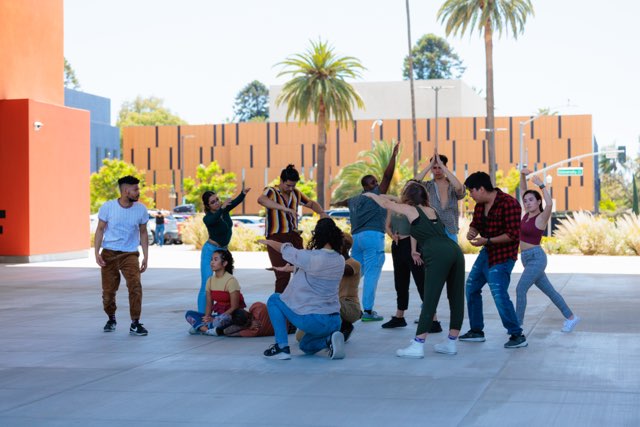
Living/Dancing with cancer
I personally know three people living with CML leukemia. I would say “working a lot” is what we three have in common. Cancer asks you to pay attention, to stop or slow down, to prioritize your health. One thing I have learned about myself is that it is hard for me to stop or slow down.
Note – The field of dance is competitive. As a dance artist producing and staying relevant seem to be important. Or maybe I realized this had become important to me.
For 17 years I lived and worked in San Francisco before coming to Riverside at 40 to get the MFA in Dance with a focus on “experimental choreography” at UC Riverside. Here in Riverside the program offered money for tuition and also I was paid to be a teaching assistant. This was where I was able to practice teaching. BUT what did I do after graduate school? I applied for full-time positions in academia. That seemed to be the expectation for someone with a master’s degree in dance. I applied for full-time jobs for seven years and then ended up in the hospital.
I wondered, as I began this “living with cancer” mode of life, why I couldn’t rest. Working was a priority and making work as a dance artist felt most important. What occurs for many with CML is a period or periods of fatigue. And you don’t always know when it’s coming. I think that’s because your body is always producing the leukemic cells even though the medication attacks those cells every day. I was in the county hospital without insurance, so social workers there helped to set me up with Covered California. This is California’s version of the affordable care act.
After I got out of the hospital, I spent a lot of time on the couch with my cats. My brother-in-law recommended Netflix to pass the time. This really helped.
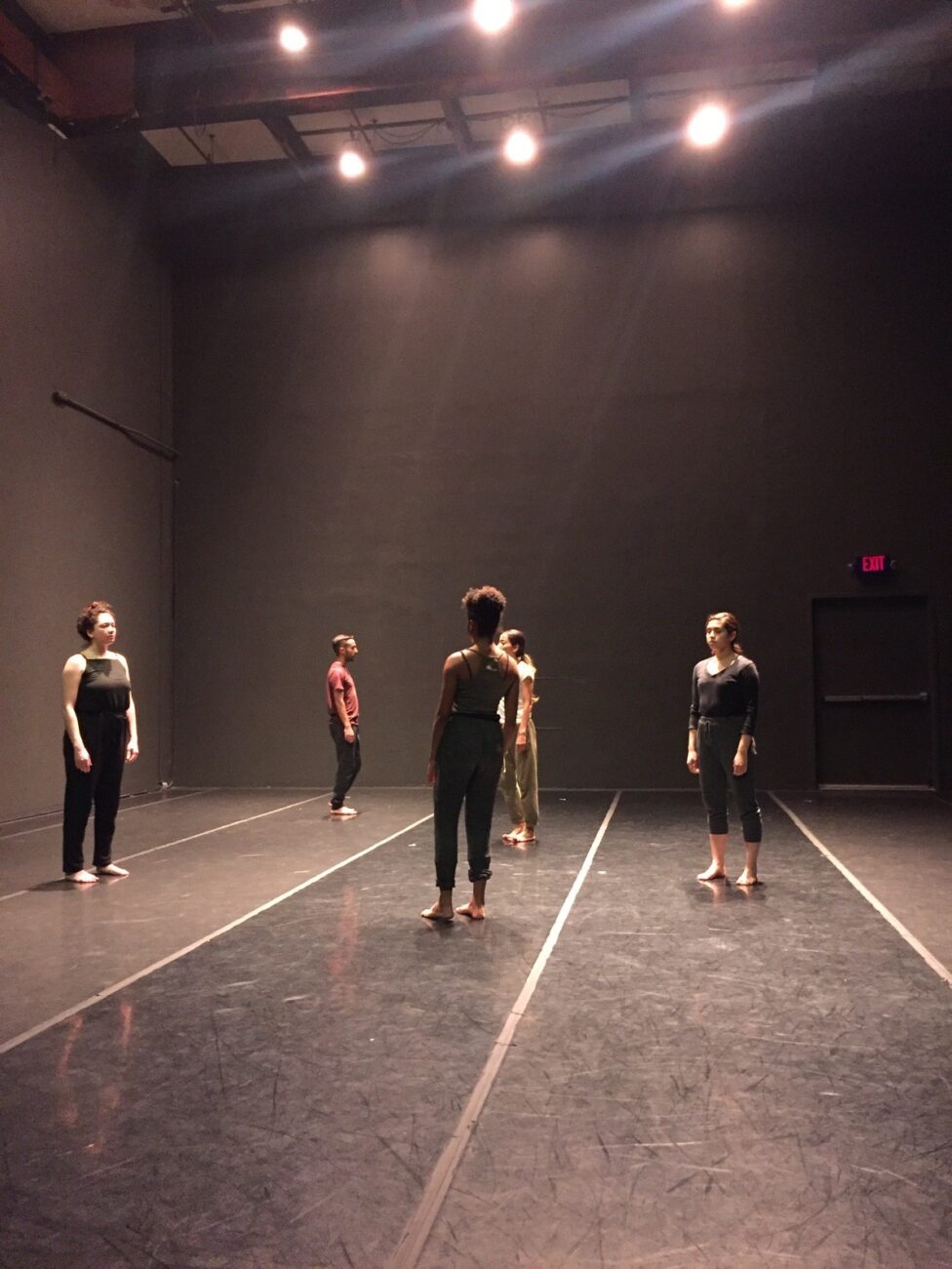
still and living
I put together a concert the summer after I was diagnosed with leukemia. This was something that got me through the diagnosis. What I called my church was my improvisation practice with local Riverside dancers. The practice was titled counterpoint/shift.
I modeled this after working closely with Susan Rose and Dancers for 8 years. With Susan we’d show up once a week (Monday’s typically in the faculty studio at UC Riverside Dance Dept). This was around the time that Susan was shifting her practice from set choreography to improvisation, which was in the fall of 2005. The improvisational work we (Kelli King and Liz Casebolt at that time) were practicing was titled Power Plays. I described this as task-based and always challenging to me. At first Susan introduced to us in her words a practice of “when” and “where” and “what.” “When” referred to timing and in rehearsals it meant paying attention to our timing in relation to each other. “Where” referred to space and how we used the space around each other and in the room. “What” was the dance vocabulary, the moves. Susan told me I had a lot of “what” training. Susan was referring to my past dance experience in choreography and codified training. There were a few improvisational tasks that we worked on each time we met with Susan. These included “how the body works”, “morphing” and “single voice.” This task-based improvisation work was where I went with my own practice.
still and living came about after a few weeks of rehearsal following the diagnosis. Counterpoint/shift, my improvisation ensemble performed at ARC (a room to create), a space run by John Pennington in Pasadena! We facilitated an afternoon improvisation workshop that we then hoped would build an audience for the performance later that evening. 18 people came to the show. I was so grateful to be able to share our improvisation practice and to be alive – even if only 18 people attended.
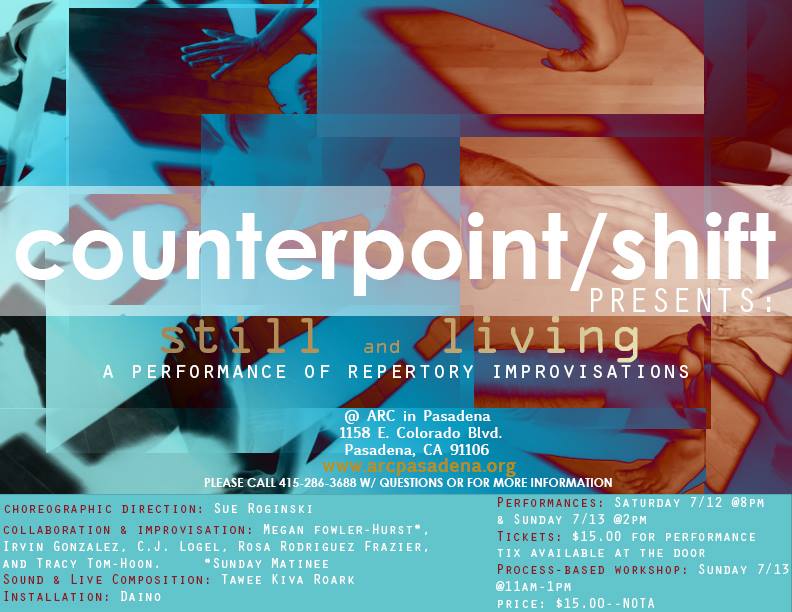
still and living was meant to be what it sounds like – a practice and period of time when I was grateful to be living! Counterpoint/shift met weekly to put the improvised concert together. We ended up sharing four choreographed improvisations at the show. Stillness was a motif that was happening throughout each choreographed improvisation. So the title came from a practiced skill, but for me, it metaphorically celebrated that I was “still” alive.
This year
I turned 60 and was still undetectable when I saw my oncologist last and had blood checked. There was no party for turning 60 – just the celebration of life.
There were some self care things on my birthday list such as body work and getting my left ear pierced. The piercing would actually be a re-piercing because I had to remove all piercings in December of 2021 for an MRI.
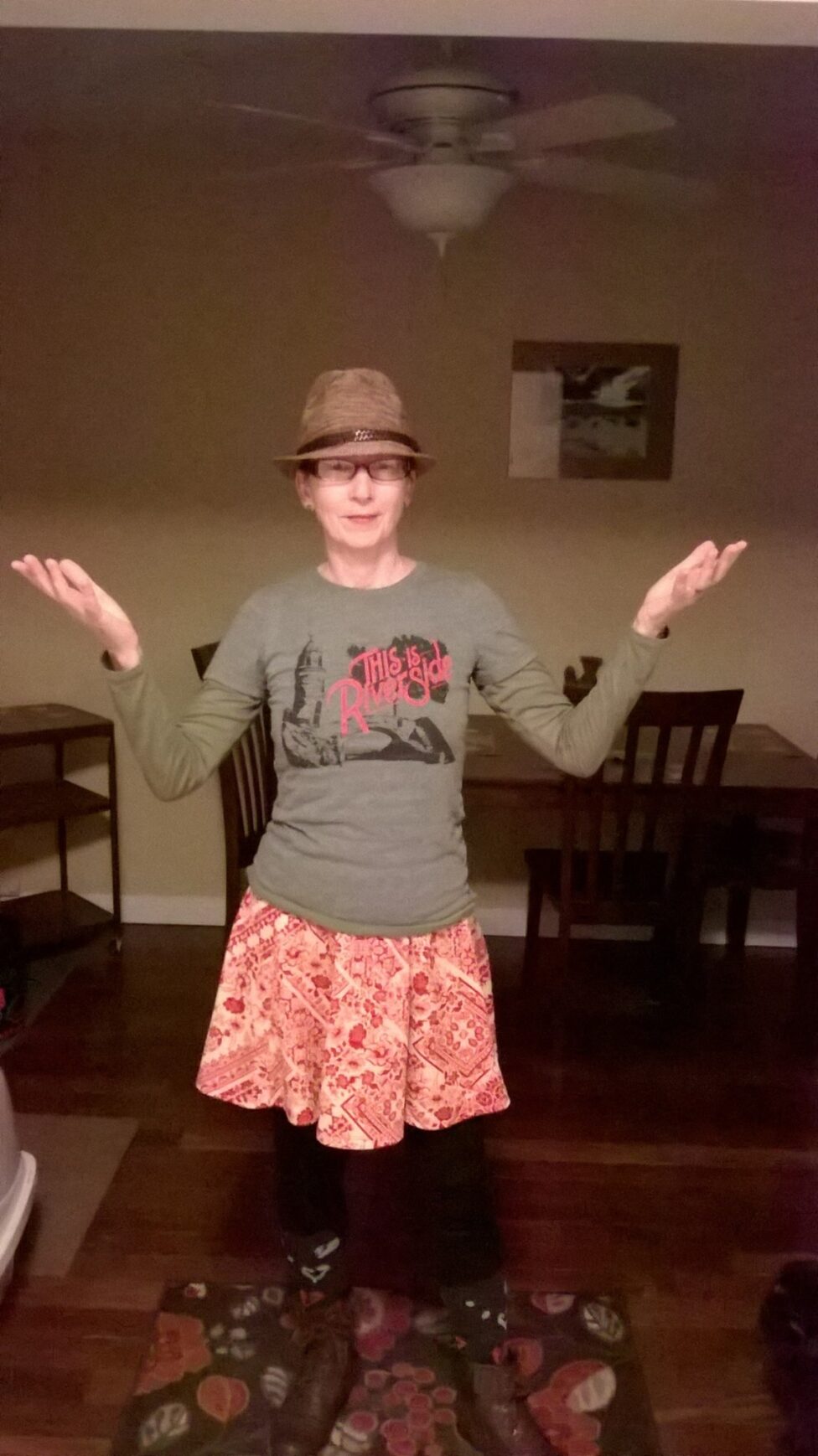
2022 Breast Cancer!!!
Because of Covid, a couple of things lapsed with my health including a dental cleaning AND the yearly mammogram.
The mammogram came back with dense tissue on the right side. It was hard to read. I was referred for a sonogram of the right breast. This was October of 2021. After the next visit with the sonogram, I was told that I should get a needle biopsy. All of this happened at the Breast Imaging Center at Riverside Community Hospital. At this point I saw my primary doctor because there were concerns but no conclusive results. He mentioned seeing a breast cancer doctor and I ended up seeing Dr. Wagman at City of Hope in Upland.
Dr. Wagman called for an MRI. I had to remove all the piercings. I went to a tattoo and piercing shop recommended by a friend. At Mission Tattoo & Piercing, the piercing artist removed my navel piercing and two piercings in my left ear, which I was unable to do by myself, including the rook. After seeing the MRI, Dr. Wagman got a sense of what to do next: mammogram along with needle biopsy. You know how uncomfortable the mammograms are right? Add that to the biopsy. The needle going in did not hurt. It was really just about the body position I was in. I would have to describe that as contortionist.
My sister Pam Hammond had mentioned what was going on with me to her doctor who pushed for her to get the BRCA gene test. Her high risk factor was having a sister (me) diagnosed with cancer 2X. Apparently (I’ve learned) that this is a tough sell to insurance companies and many do not cover this. A BRCA gene test lets you know and become aware of whether or not breast cancer can be passed down in the family. Since Pam has 3 daughters, she definitely wanted to take the test. We tested negative for the BRCA gene test!
Question: Do I get the mammo in 6 months or 12 months? Can my doctors agree?
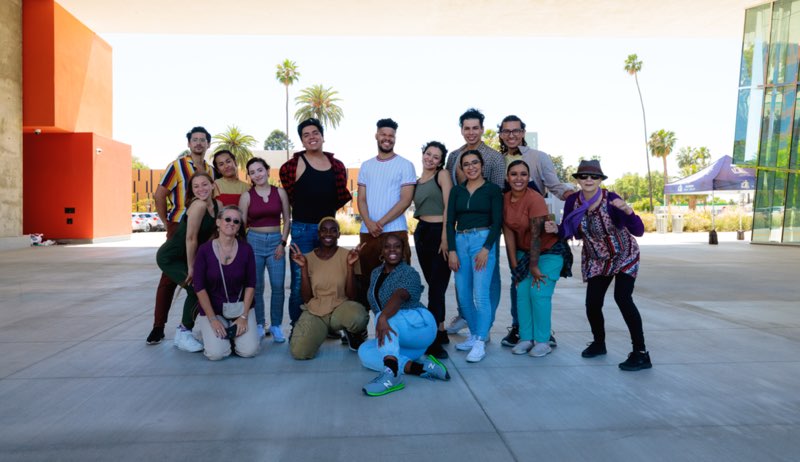
inVISIBLE/unHEARD
Opportunities for dance artists in Riverside California are few and far between unless you are a student within a college or dance studio setting. I had been contacted by Robyn Peterson from the Museum of Riverside to create a dance piece that would bring attention to sites in Riverside that weren’t open yet (Civil Rights Institute Inland SoCal and The Cheech Marin Center for Chicano Art). I brought in collaborators who were working with me in counterpoint/shift at the time. In the Fall of 2021 I met with Aisha Shauntel Bardge, Stephen Tanner and Edwin Antonio Sigüenza. We started planning for the project titled inVISIBLE/unHEARD and reached out to local dance friends in college dance department settings for recommendations for dancers. We invited everyone who was referred to us and scheduled our rehearsal process to begin in February of 2022. I didn’t know I’d be facing breast cancer although the Fall following that initial mammogram brought stress and worry. I just kept working.
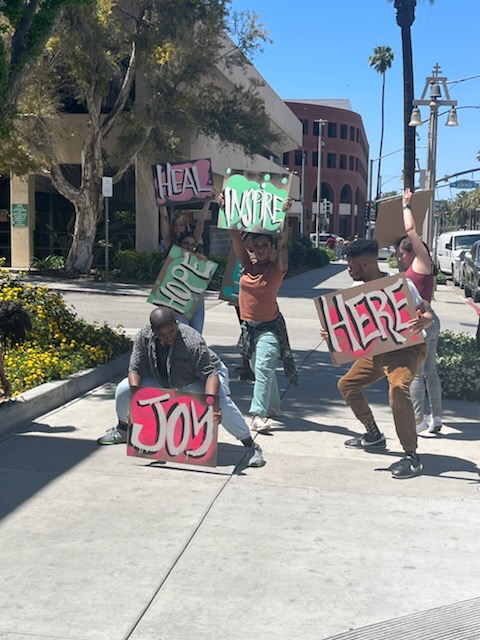
In the process of creating work with Edwin, Stephen and Aisha, I got the breast cancer diagnosis. I’d miss one rehearsal after the surgery. I was brought back to 2014 and that moment in the hospital when the dance takes precedence over the body under duress and healing time. Was dance a healer or distraction? These questions emerged as I wrote the past into this moment.
Guess what I found out? You can work during your radiation treatments.
How to prepare for radiation
After the surgery which my doctor called a partial mastectomy NOT lumpectomy (although everyone else around me like nurses etc say lumpectomy), I was instructed to wait a bit for the healing and then began the stretches of my right arm so that I could hold my hands behind my head for at least ten minutes (during a radiation treatment which is very brief). The preparation for the radiation in the room was what took the time. The actual radiation treatment was maybe 3 minutes.
They waited 6 weeks between surgery and my first radiation treatment (36 total). I was working the entire time. As a dance artist juggling multiple jobs on Covered California, I didn’t really have the choice to take off work. Luckily one of my jobs was asynchronous and on-line. Multiple people gave me rides to radiation including my friends Rita Chenoweth and Roy Dietrich. It was hard for me to ask for help but they were happy to do it. I noticed at the time in 2014 and again in 2022, some friends had a hard time talking to me about my cancer. This I think had to do with not knowing what to say or do.
Side thought: Fear of dying is real. What do you do when you are afraid? Improvising helps.
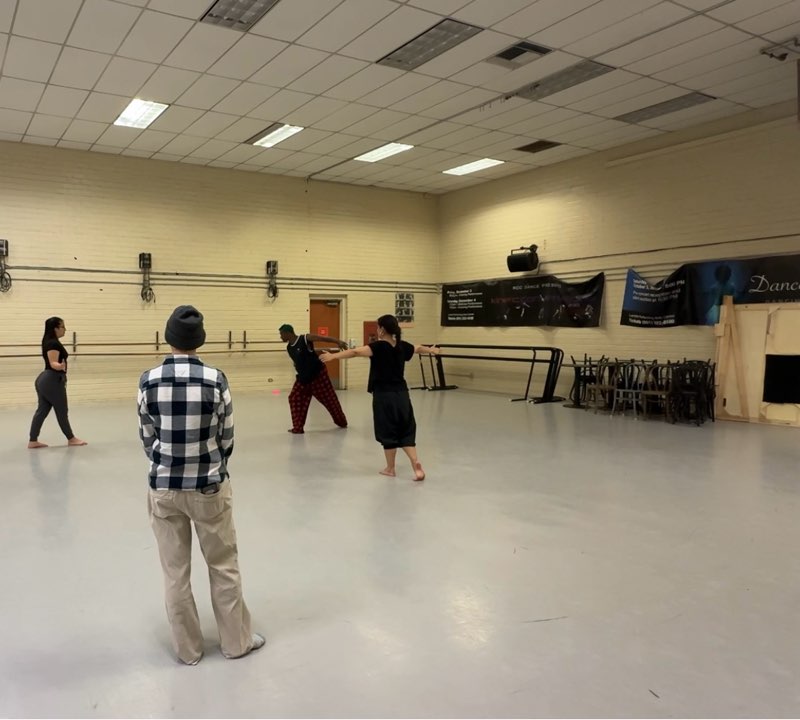
Leaving Fear at the Door
The class is called Leaving Fear at the Door. It is task-based, and instructions/prompts are provided. First everyone writes down something they want to leave at the door. I offer a few options for folks to consider including fear or maybe self doubt.
How the prompts work – they actually offer a few-moment span in which the word you put down is literally out of your mind and outside of the door. I draw from the improvisations of Ruth Zaporah from Action Theater and Susan Rose, my mentor, to create and facilitate the class. Typically I begin class with “walk, sit, stand,” an Action Theater improvisation. This exercise (pedestrian movements) allows participants the time to become aware of each other and the space. “Sit and stand” allows for stillness, a pause (important to Susan Rose’s work too). The pause gives participants a moment to consider “when” they might move again in relationship to everyone else. Lots to consider AND. There is the word we left outside the door. Now we take the time to consider what we want to bring in the room. We write those down.
I’ve facilitated many Leaving Fear workshops over the years. I think it worked for many people because all bodies were welcome and one did not have to have dance experience to participate. And it helped me. Leaving Fear gave me a moment to reflect and bring myself into the present and in my body. I imagined people living with cancer turning toward god and church for support, or yoga and meditation. For me it has been dance improvisation.
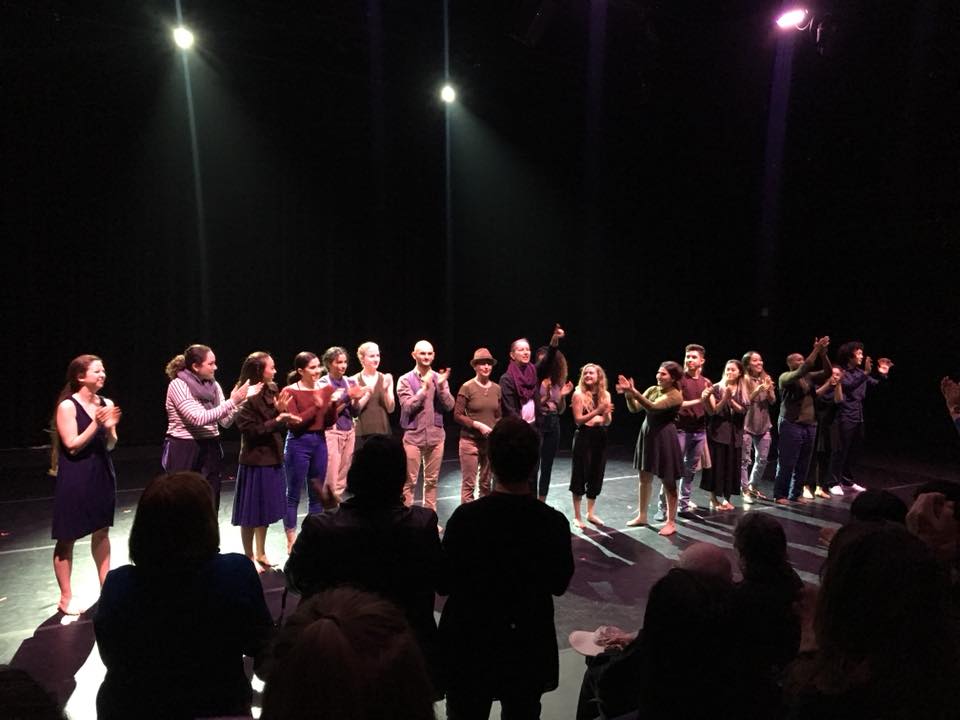
Sofia
My friend and colleague Sofia Carreras, who also had battled cancer, and I became close after she was in remission. She worked full time at Riverside City College where I was an adjunct faculty in dance. I think it was 2017 when Sofia had shown interest in sharing a show with me. The first thing she did was speak with Glenda Carhart at Riverside Ballet Arts to ask if we (counterpoint/shift) could also use space there. Sofia appreciated what I was doing because it was so different from what she was working on. Me: choreographed improvisations. Sofia: contemporary ballet. After many lunches together (outside of our work environment) we decided on shows in SF and in Riverside to happen in 2018. Sofia’s cancer previously in remission had metastasized at this point. The work became more urgent perhaps and we were able to pull off both shows although with health setbacks both Sofia and I almost did not make it to the SF performance.
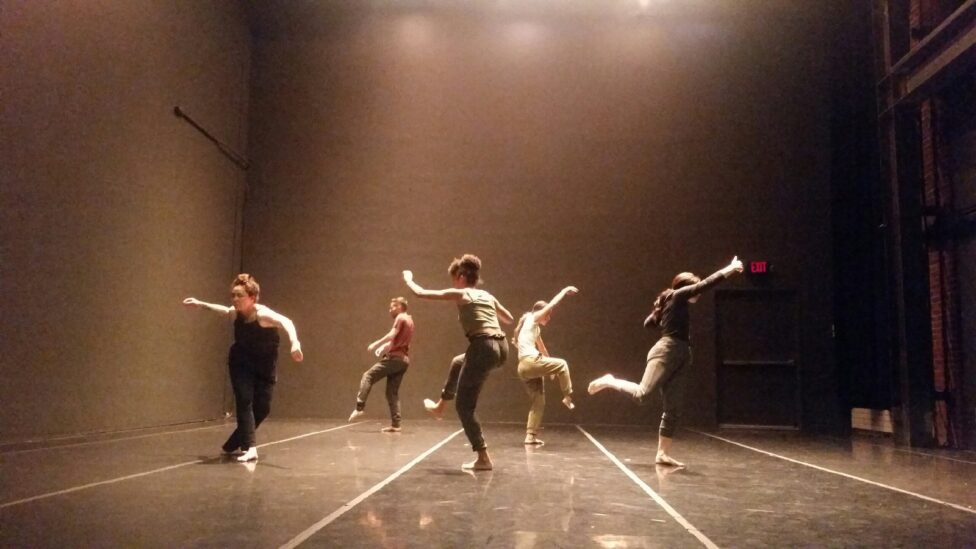
I think for me this time was validating because we both loved and lived dance but also knew how vulnerable life was and had both dealt with the fear of dying and cancer. Our dance practices couldn’t have been more different but we clung to each other in our shared joy of dance and working with dancers. Sofia passed away in April of 2020. I miss you Sofia!
This is my life
Cancer diagnosis stops you, stuns and scares. I mentioned that I was hoping to live for one more year to make it to 50, and I just turned 60. I think I got used to being afraid. I go to my oncologist every 4 months. I also have a radiation oncologist whom I see once per year. Dr. Mandelin (the radiation oncologist) told me I did not need to see him anymore because I am in remission from breast cancer, but I like seeing Dr. Mandelin because he explains things in a detailed and scientific way. And I see Dr. Wagman, the surgical oncologist, now every 6 months. Dr. Wagman is monitoring me and also checks my breast area where scar tissue formed after the surgery.
At the beginning of this writing I shared that I went to the hospital because I saw floaters in my eyes. My eye doctor at the time referred to this as proliferative leukemic retinopathy. My care team now includes the three doctors at City of Hope, three eye doctors and my primary doctor. I juggle my work and doctor visits. It’s a balancing act. And my health is stable.
Deep breath. Pause. You are capable!
I think having a chronic cancer or having dealt with cancer in any form pushed me to appreciate life. Now I understand what “stop and smell the roses” means – literally.
I am grateful for life and for dance. My support network includes my partner, my family and friends. There are friends who check in with me because they are okay asking about my cancer. This is my life.

